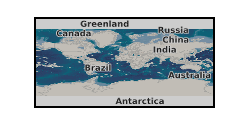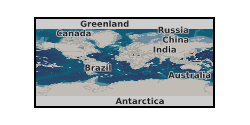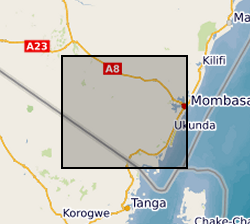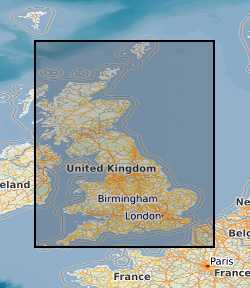Chlorides
Type of resources
Topics
Keywords
Contact for the resource
Provided by
Years
Formats
Representation types
Update frequencies
Scale
-

This data set contains example input and output files from density functional theory calculations of rare earth systems, using the Vienna Ab initio Simulation Package (VASP), The data set it split into two parts. The first data set contains the input and output files of molecular dynamics simulations of MCl3 in solution, where (M = Nd, Gd and Er) at ambient conditions, which was modelled at 341 K using the optB88 exchange-correlation functional. The calculations were run in order to investigate speciation in rare earth chloride solutions, including trends across the row, using a light (Nd), medium (Gd) and heavy (Er) rare earth. These particular calculations were used to validate classical interatomic potentials that were used to perform more complex simulation on larger systems and longer timescales. Only the first 2 ps of the trajectories are deposited here, since the complete trajectories are large. The second data set contains example input and output files for lattice dynamics calculations of the thermodynamics properties (heat capacity and entropy) of Nd-monazite and Nd-xenotime at ambient conditions up to 1200 K. In addition, it includes scripts for processing and plots of final results. These are useful for thermodynamical modelling of rare earth systems. Only the input and output files for Nd are deposited here, since the files are large and input files for Gd and Er are identical, save for the change in element.
-
Method validation of IC-ICPMS with chlorine removal for phosphite analysis (NERC Grant NE/V010824/1)

Method development for trace-level analyses of phosphite in chloride-rich matrices. Dataset includes linearity data from the ion chromatograph (IC) in stand-alone mode and coupled to the inductively-coupled plasma mass spectrometer (ICP-MS), with and without removing chloride from the solution, as well as nuclear magnetic resonance (NMR) data for phosphorus species. The results demonstrate successful removal of the chloride matrix for analyses of phosphite in solutions at sub-ppb concentrations. Additional details about the methodology are published in Baidya, A.S. and Stüeken, E.E., 2024, Rapid Communications in Mass Spectrometry, 38(1), p.e9665.
-

The data sets contain the monthly rainfall volume from manual rain gauge stations spread across the study area. There are 11 rainfall stations. The rain unit is mm. In addition, the dataset contains the chloride concentration in mg/l of the rainfall, for each month. Blank data (-) means data not available due to not enough rain volume, no rainfall or problems when transporting the samples from Kenya to Barcelona. The data available is only from April 2016 to November 2017. This data is useful to calculate the recharge volume by chloride mass balance (CMB) methodology. https://www.hydrol-earth-syst-sci-discuss.net/11/307/2014/hessd-11-307-2014-print.pdf
-

The dataset is a Soil Corrosivity Map for the U.K. based on the BGS DIGMapGB-PLUS Map. The creation of this dataset involves scoring the Soil Parent Material types for five different attributes that contribute towards the corrosion of underground assets. These are (i) high or low soil pH, (ii) general soil moisture, (iii) the likelihood that soil saturated and undergo periods of anaerobic conditions, (iv) the presence of sulphides and sulphates and (v) the resistivity of the soil parent material. The scoring of each of these parameters was undertaken based on the Cast Iron Pipe Association (CIPA) (now the Ductile Iron Pipe Research Association, DIPRA) rating system. By combining the scores of each parameter a GIS layer has been created that identifies those areas that may provide a corrosive environment to underground cast iron assets. The final map has been classified into three categories signifying: 'GROUND CONDITIONS BENEATH TOPSOIL ARE UNLIKELY TO CAUSE CORROSION OF IRON', 'GROUND CONDITIONS BENEATH TOPSOIL MAY CAUSE CORROSION TO IRON', 'GROUND CONDITIONS BENEATH TOPSOIL ARE LIKELY TO CAUSE CORROSION TO IRON'. The dataset is designed to aid engineers and planners in the management of and maintenance of underground ferrous assets.
 BGS Data Catalogue
BGS Data Catalogue